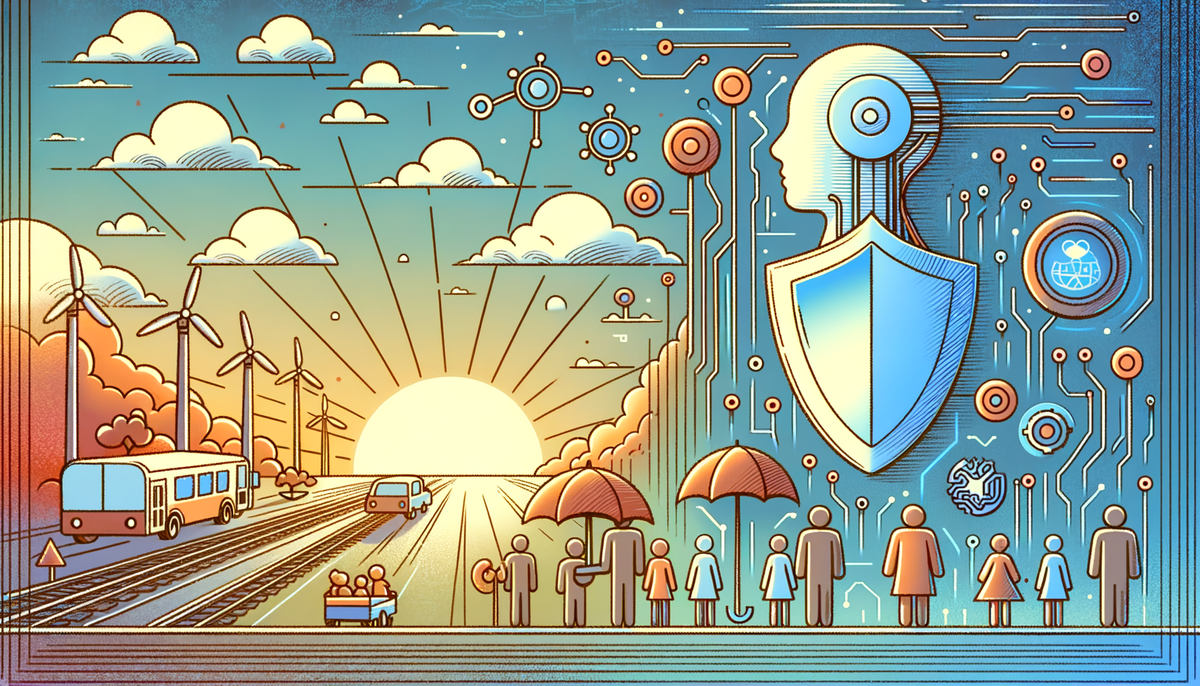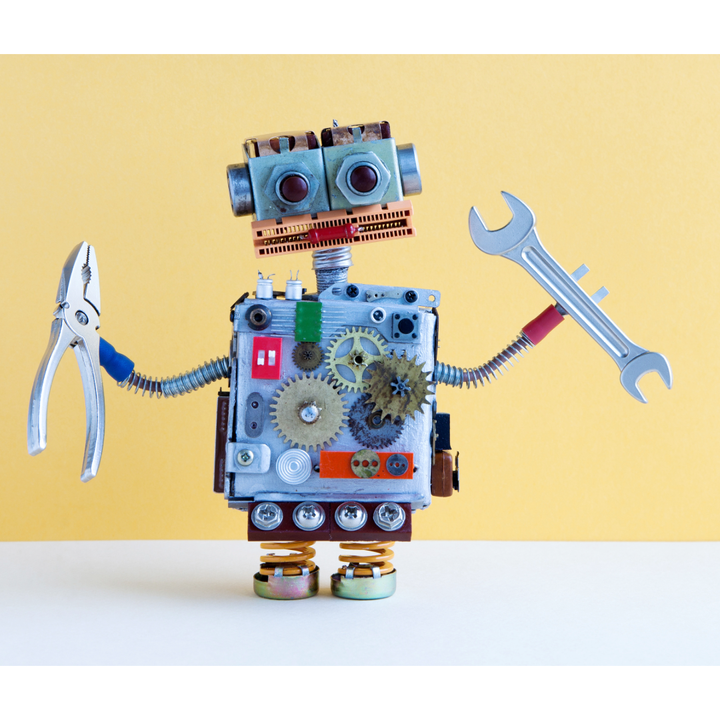AI Updates: Innovations and Transformations in Various Sectors

This article delves into the latest groundbreaking developments in artificial intelligence—from the landmark IPO debut of CoreWeave and the rise of agentic AI transforming the global workforce, to innovative applications that enrich everyday experiences and revolutionize entire industries such as e-commerce and pest control. We explore how companies are leveraging both cutting‐edge infrastructure and consumer-centric features to redefine what technology can achieve, unpacking insights from recent reports and industry observations to offer a comprehensive analysis of AI’s multifaceted evolution.
CoreWeave’s Debut: Igniting an AI IPO Revolution
The recent spotlight on CoreWeave’s upcoming Nasdaq debut marks a significant milestone in the ongoing AI boom. Originally established as a crypto mining enterprise in 2017, CoreWeave has rapidly pivoted to become a critical provider of AI infrastructure. By strategically embracing NVIDIA’s powerful GPUs, this company is now attracting notable investor interest, including a $25 million backing from SuRo Capital. As the first standalone AI company to hit the Nasdaq in a market jolted by economic uncertainty, CoreWeave is positioned to potentially set off what many foresee as an “IPO parade.”
CoreWeave’s ambition to raise up to $2.7 billion and garner valuations upward of $25 billion has struck a chord with market watchers. This enthusiasm is driven by their forecasted revenue explosion in 2024—projected to soar more than 700% to almost $1.92 billion, fueled largely by contracts with corporate giants like Microsoft. Yet, despite these promising signals, scepticism remains due to the balancing act required between high infrastructure investments and the prevailing uncertainties gripping the tech sector. The company’s significant net loss of over $863 million underlines the inherent risks that come with rapid scaling in a fluctuating market environment.
As traditional tech stocks have wavered under rising interest rates and inflation fears, CoreWeave’s moment could signal not just the success of a single company, but a broader resurgence of tech IPOs. The debut stands as both a symbol for the roaring ambitions within the AI industry and as a litmus test for the prevailing market sentiment towards innovative tech startups. This fascinating juncture invites investors to consider the implications of shifting focus onto AI-powered offerings, with market indicators suggesting that if CoreWeave’s performance holds up, it might create a domino effect prompting many other companies to rush to the public market.
For those interested in further discussion on emerging trends in the AI industry, you can follow additional insights at AI News Podcast Update and Expanding Horizons: The Future of AI.
Agentic AI: Reshaping the Global Workforce
A significant narrative gaining traction in the AI community is the emergence of agentic AI—autonomous systems that operate with minimal human intervention. Insights from an IBM executive, as featured in a recent report, suggest that this next-generation AI is set to revolutionize the global workforce, redefining traditional roles in industries spanning manufacturing, services, and beyond.
Unlike conventional AI systems that require periodic human oversight to learn and adapt, agentic AI operates with a degree of independence that could streamline operations tremendously. With the capability to make decisions based on real-time data, these systems hold the promise of boosting productivity while alleviating the routine burden often associated with manual tasks. Yet, this evolution does not equate simply to automation that sidelines human effort; rather, it heralds the creation of new, hybrid roles that combine human judgment with machine precision.
“The key to artificial intelligence has always been the representation.”
— Jeff Hawkins, Co-founder of Palm Computing
As agentic AI becomes more pervasive, organizations are also pressed to reconsider their workforce strategies. Training programs and educational curricula are adapting to include not only technical skills but also emotional intelligence and critical thinking—the very aspects that remain distinctly human. With AI now fully capable of handling tasks that once required nuanced human insight, supervisory and strategic roles are seeing a transformation, with the human touch remaining indispensable in contexts requiring empathy, ethical reasoning, and innovative problem-solving.
The broader implications of agentic AI extend into discussions about privacy, ethical standards, and societal shifts. As ethical frameworks evolve, consultations with experts and thought leaders become crucial to ensure that this technological leap benefits society holistically. More on these transformative industry trends can be explored through stories like Exclusive AI Innovations and Their Impact on Industry Dynamics published on AI.Biz.
Enhancing Everyday Experiences: The AI-Enabled Reader and Beyond
Within the realm of consumer technology, even devices that have remained relatively stable for years, like e-readers, are experiencing significant shifts. A recent update to Amazon’s Kindle—version 5.18.1—demonstrates how AI and integrated sensors are breathing new life into everyday tools. By leveraging the device’s internal accelerometer, the new update introduces double-tap gestures for page turning and scrolling, liberating users from the perennial annoyance of smudged screens.
This seamless integration of classic user interface enhancements symbolizes a broader trend where familiar tools are continually reimagined using modern technology. The introduction of a Recaps feature—designed to provide concise summaries of previously read texts—not only elevates the reading experience but also underscores the value that AI holds in managing and curating personal content. This marriage of intuitive design and cutting-edge technology illustrates how even simple everyday devices can benefit from AI-driven improvements.
The Kindle update, while focused on enhancing user experience, also highlights a subtle but important narrative: the incremental yet impactful role of AI in refining quality-of-life experiences. Much like the nuanced capabilities needed in culinary AI or autonomous workforce systems, updates like these further emphasize that AI is not solely reserved for complex business applications but also for everyday usability improvements. To see more on transformative everyday tech innovations, consider exploring our article on AI Innovations Transforming Everyday Experiences and Industries.
AI in the Culinary World: Recipe Generators and the Quest for Culinary Perfection
Artificial intelligence is not just reshaping enterprise-level operations; it is also beginning to stir the pots in the culinary world. An AI-based recipe generator, like SideChef’s RecipeGen, embodies the aspiration to turn smartphone snaps into restaurant-quality meals. The idea of capturing the essence of a dish through a simple photograph—and receiving a detailed, step-by-step culinary guide in return—has a captivating allure, especially for home cooks and food enthusiasts.
In practice, however, this innovative approach reveals the current limitations of AI. For instance, when one user attempted to recreate a brunch dish featuring artisanal components such as strawberry butter and sourdough focaccia, the AI struggled to accurately capture all the ingredients, omitting nuances that are essential to the dish’s intended flavor profile. This example illustrates that while AI can provide inspiration and a basic framework, the delicate art of haute cuisine still demands human intuition and expertise.
AI in culinary applications shines when generating ideas for fusion or simple recipes, yet it still battles the complexity of interpreted visuals where subtleties like spice balance or precise texture recognition are crucial. The experience of the foodie tester, who later experimented with a familiar dish like sweet potato gnocchi, underlines the challenge: the AI’s instructions, though mostly correct, sometimes deviate from traditional methods—suggesting baking rather than boiling, for example. Such instances serve as a reminder that while AI can serve as a supportive sous-chef, it is not yet ready to replace the role of a seasoned chef.
This interplay between innovation and practical execution is a microcosm of the broader AI narrative—a story of successive approximation towards perfection. As AI continues to ingest more data and refine its algorithms, the expectation is that these systems will one day achieve the level of nuance demanded by culinary professionals. Until then, human creativity remains the essential ingredient in every great recipe.
Revolutionizing E-Commerce: Automation in the Digital Marketplace
In the fast-paced world of digital commerce, the integration of AI has been nothing short of transformative. Recent developments in AI-driven automation have created ripples across the e-commerce sector, significantly enhancing operational efficiency. A vivid illustration of this trend is seen in the collaboration between CIRRO Fulfillment and Pipe17. Their joint venture harnesses real-time inventory tracking and automated order processing, eliminating tedious manual tasks and reducing error rates that have long plagued traditional systems.
This amalgamation of advanced automation is reshaping the operational paradigm for online businesses. By streamlining inventory management and order fulfillment processes, companies are now better positioned to scale operations and meet high consumer expectations in increasingly competitive omnichannel markets. In many respects, this shift reflects a broader movement towards personalized, customer-centric strategies where speed and precision are critical.
Industry examples illustrate the broad impact of these innovations. Even as some e-commerce giants experience fluctuations—like the recent upswing by Microalliance Group contrasted with challenges at DLocal—the overall trajectory emphasizes resilience and adaptability enabled by AI. In fact, the incorporation of generative AI solutions into infrastructures by companies such as Amazon points towards a future where digital and physical retail strategies are more seamlessly integrated than ever before.
Beyond mere operational improvements, AI-driven automation has paved the way for more dynamic and responsive business models. The real-time data generated through these systems enables companies to not only optimize their current operations but also to forecast trends and adapt strategies preemptively. This proactive approach is vital in a world where market conditions and consumer behavior can shift rapidly.
For those following the evolution of AI in commerce, delving into detailed updates on how these ecosystems are evolving is a worthwhile endeavor. Detailed perspectives can be found in comprehensive updates such as This Week In E-Commerce, which discusses the transformative potential of AI automation in retail.
AI-Driven Pest Control: A Smart Solution for a Timely Issue
Moving into a different sector, the capabilities of AI have even permeated pest control, a field traditionally reliant on manual expertise and experience. Jeffs' Brands Ltd has recently completed the development stage for its AI-powered pest control application—a mobile tool designed to assist users in quickly identifying pests and receiving tailored treatment recommendations.
Leveraging artificial intelligence, the app provides a smart interface that not only recognizes various pests through image analysis but also factors in the severity of the infestation and user-specific preferences. This personalized approach to pest management is aimed at offering optimized, effective solutions that are otherwise challenging to determine via traditional methods.
The implications of such technology extend far beyond convenience. By integrating AI with robust pest control data, the app has the potential to change how consumers and even professionals approach pest management. The efficiency gained from real-time analysis and recommendations could lead to better resource allocation in both residential and commercial applications, paving the way for a more digitally integrated approach to everyday problems.
As with many innovative technologies, the path ahead involves navigating uncertainties—be it economic conditions, evolving consumer perceptions, or policy shifts. However, the development of this AI-based pest control solution also signals a broader trend: the convergence of digital innovation with traditional industries in ways that boost productivity and open up new market opportunities. Further details on such groundbreaking integrations can be explored with related articles and research in the innovation space.
Intertwined Narratives in a Rapidly Evolving AI Landscape
The narratives discussed here—from CoreWeave’s high-stakes IPO ambitions and the transformative potential of agentic AI to the nuanced reimagining of everyday devices and creative solutions in sectors like e-commerce and pest control—underscore the diverse applications of artificial intelligence in today’s world. What becomes clear is that AI is not a monolithic technology but a multi-dimensional phenomenon that touches every aspect of modern life.
It is also worth noting that as AI systems continue to evolve, so too does our understanding of how best to integrate these technologies safely, ethically, and efficiently into society. Bridging the gap between technical capabilities and real-world applications remains a central challenge—one that demands collaboration across industries, academia, and regulatory bodies. In conversations around this subject, experts often echo the sentiment captured eloquently by Jeff Hawkins:
“The key to artificial intelligence has always been the representation.”
This reminder reflects the idea that how we conceptualize and represent data, processes, and ultimately, our world through AI, is fundamental to harnessing its full potential. Whether through enhanced automation in e-commerce operations, AI-driven innovations that touch on our daily lives like reading devices and culinary experiences, or even applications that streamline traditional services such as pest control, the journey forward is one of continuous learning and adaptation.
Moreover, the evolution of agentic AI brings hope that even as machines assume more roles, human skills will be reoriented towards areas that machines cannot emulate easily—such as creativity, empathy, and ethical judgment. This symbiosis between human potential and AI capabilities promises to redefine work, leisure, and everything in between.
Looking Ahead: Embracing a Future of Innovation and Collaboration
As we witness the unfolding chapters of AI's rapidly evolving narrative, several key themes emerge. Companies like CoreWeave are not merely setting precedents in financial markets but are also catalyzing a broader reassessment of how technology is valued. The drive for efficiency and enhanced customer experiences in sectors like e-commerce, coupled with the smart applications found in pest control and even in everyday devices like e-readers, tells a compelling story of pervasive innovation.
The challenges remain significant. Economic unpredictability, regulatory hurdles, and the need for continual innovation all pose potential risks. However, these challenges are balanced by opportunities that promise to revolutionize not just individual industries but the very fabric of our society. Whether you are a business leader trying to navigate these turbulent times, a tech enthusiast looking forward to the next big breakthrough, or even someone simply curious about how AI is reshaping everyday life, the terrain ahead is as promising as it is complex.
For a more expansive view of emerging trends and insightful commentary from industry leaders, we encourage you to explore related content on AI.Biz. Our ongoing series, such as the latest AI news updates and features on the future of AI, offer deep dives into how technology is reshaping business dynamics and everyday experiences.
The interplay of technological evolution and strategic adaptation is reminiscent of a well-worn proverb: “Change is the only constant.” The AI revolution is a vivid testament to this timeless truth, continuously challenging us to re-envision the ways in which we work, live, and even think about innovation.
As we stand on the cusp of what could be described as a renaissance in AI-driven innovation, the narratives of today lay the groundwork for the transformative breakthroughs of tomorrow. With judicious navigation of ethical frameworks, technological limitations, and market forces, the promise of a better, more efficient, and inclusive future powered by AI seems not only plausible but imminent.
Further Readings and Insights
For additional perspectives and updates on the evolving landscape of artificial intelligence, readers may find these resources enlightening:
- WNS Wins Five 2025 AI Excellence Awards and More
- Expanding Horizons: The Future of AI
- Exclusive AI Innovations and Their Impact on Industry Dynamics
- Everything You Need to Know About AI's Latest Innovations
- This Week In E-Commerce – AI-Driven Automation
- Jeffs’ Brands AI-Based Pest Control App
As we continue to chronicle and analyze the dynamic world of artificial intelligence, it is evident that every innovation, big or small, contributes to a collective transformation. Embracing these changes with an open mind and a critical eye will be key to navigating the exciting frontier that lies ahead.



Comments ()